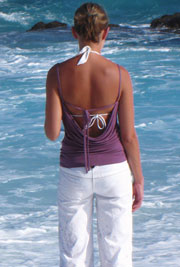- What is Failed Back Surgery Syndrome (FBSS)?
- Statistics
- Risk Factors
- Progression
- Symptoms
- Clinical Examination
- How is it Diagnosed
- Prognosis
- Treatment
- References
What is Failed Back Surgery Syndrome (FBSS)?

Statistics
FBSS occurs as a complication in 5–40% of patients undergoing lower spinal surgery.
Risk Factors
It is thought that patients undergoing spinal surgery may be more likely to develop FBSS if they have:
- Epidural fibrosis (development of hard connective tissue around one of the layers surrounding the spinal cord and part of the nerves coming from it)
- Recurrent disc herniation
- Instability of a segment of spine
- Incorrect initial diagnosis of the back problem
- Incomplete decompression (reduction in pressure on the nerve root)
- Decompression at the wrong level
- Poor patient selection for surgery
- Arachnoiditis (inflammation of one of the layers surrounding the spinal cord and part of the nerves coming from it)
- Permanent nerve root damage
- Facet joint disease
Progression
The progression of FBSS varies between individuals. It is probably influenced by factors such as the underlying problem with the back before surgery, what kind of surgery was performed, why and when FBSS develops, and how it is managed.
Symptoms

FBSS is commonly associated with conditions such as depression, anxiety disorder and substance abuse. These conditions need to be identified and managed in order to best treat the pain associated with FBSS.
All chronic pain conditions are significantly impacted by, and have a large impact on, the state of mind of the person experiencing the pain. How the person feels about the pain and how they approach it psychologically plays a significant role in how they function.
Clinical Examination
The doctor will examine the patient’s back, as they would for all patients presenting with back pain. This includes feeling for painful structures, testing range of movement, testing reflexes (by tapping places such as the knees and ankles), checking sensation (touch, hot/cold, pain), and checking leg strength.
How is it Diagnosed
There are many tests that may be carried out to determine the underlying cause of FBSS, though the diagnosis can usually be made on the basis of what the patient is feeling (their symptoms).
Possible tests that may be suggested include CT, MRI, CT, and injection of structures in the back (e.g. the discs and joints).
Prognosis
Unfortunately, FBSS is very difficult to treat effectively, and there is no one treatment known to effectively cure the pain that accompanies FBSS. The likelihood of reducing the pain depends on the underlying cause, and the methods used to treat that cause.
Treatment
No one treatment is effective for all people with FBSS. Treatment will vary according to the individual, and the underlying cause of FBSS.
Conservative management
Pharmacotherapy
Medication may be used in pain management. Opioid medication should be used with caution, as it can be habit-forming, and the long term outcome of its effectiveness in FBSS is not clear. GPs or specialists (surgeons, pain specialists, etc) will prescribe medication if it is appropriate.
Exercise/physiotherapy
Gentle exercise programs assist with return to function and psychological wellbeing. It is best if this exercise is tailored to the individual by a physiotherapist or exercise physiologist;
Counselling
Counselling may help with pain management and control strategies. The GP or specialist may arrange a referral to a clinical psychologist to provide this counselling.
Pain clinic
Each of the options outlined above may be combined and provided in the setting of a specialist pain clinic. A GP or specialist may arrange a referral to a pain clinic, which is usually based at a tertiary hospital.
Spinal cord stimulation
Spinal cord stimulation (SCS) involves electrodes being implanted next to the spine, and an electric current applied. This current modifies the pain signals that are sent by damaged structures. This is an effective option for some individuals with FBSS, as it has been shown to improve health related quality of life in this group.
Injections
Injecting anaesthetic or steroids into the structures around the spine may provide short term relief. Injecting saline or other substances to physically break up scar tissue, a process called lumber percutaneous adhesiolysis, may be effective in some cases.
Further surgery
Some causes of FBSS may be treated with further surgery. For example, if a disc bulge has re-occurred following surgery, it may need to be repaired again. Cutting certain nerves from the spine (medial branch neurotomy) may occasionally be suggested.
 |
For more information about spinal cord stimulation devices, click here. |
References
- Anderson VC, Israel Z. Failed back surgery syndrome. Curr Rev Pain. 2000; 4(2): 105-11.
- Van Goethem JW, Parizel PM, van den Hauwe L, De Schepper AM. Imaging findings in patients with failed back surgery syndrome. J Belge Radiol. 1997; 80(2): 81-4.
- Schofferman J, Reynolds J, Herzog R, Covington E, Dreyfuss P, O’Neill C. Failed back surgery: Etiology and diagnostic evaluation. Spine J. 2003; 3(5): 400-3.
- Fiume D, Sherkat S, Callovini G, Parziale G, Gazzeri G. Treatment of the failed back surgery syndrome due to lumbo-sacral epidural fibrosis. Acta Neurochir Suppl (Wien). 1995; 64: 116-8.
- Heithoff KB, Burton CV. CT evaluation of the failed back surgery syndrome. Orthop Clin North Am. 1985; 16(3): 417-44.
- North RB, Kidd DH, Campbell JN, Long DM. Dorsal root ganglionectomy for failed back surgery syndrome: A five-year follow-up study. J Neurosurg. 1993; 39: 301-311.
- Wilkinson H. The failed back syndrome: Etiology and therapy [2nd edition]. Philadelphia: Harper & Row; 1991.
- Long DM, Filtzer DL, BenDebba M, Hendler NH. Clinical features of the failed-back syndrome. J Neurosurg. 1988; 69(1): 61-71.
- North RB, Ewend MG, Lawton MT, Kidd DH, Piantadosi S. Failed back surgery syndrome: 5-year follow-up after spinal cord stimulator implantation. Neurosurgery. 1991; 28(5): 692-9.
- Fan YF, Chong VF. MRI findings in failed back surgery syndrome. Med J Malaysia. 1995; 50(1): 76-81.
- Talbot L. Failed back surgery syndrome. BMJ. 2003; 327: 985-6.
- Mavrocordatos P, Cahana A. Minimally invasive procedures for the treatment of failed back surgery syndrome. Adv Tech Stand Neurosurg. 2006; 31: 221-52.
- North RB, Kidd DH, Farrokhi F, Piantadosi SA. Spinal cord stimulation versus repeated lumbosacral spine surgery for chronic pain: A randomized, controlled trial. Neurosurgery. 2005; 56(1): 98-106.
- Skaf G, Bouclaous C, Alaraj A, Chamoun R. Clinical outcome of surgical treatment of failed back surgery syndrome. Surg Neurol. 2005; 64(6): 483-9.
- Polatin PB, Kinney RK, Gatchel RJ, Lillo E, Mayer TG. Psychiatric illness and chronic low-back pain. The mind and the spine-which goes first? Spine. 1993; 18(1): 66-71.
- Schwarzer AC, Aprill CN, Derby R, Fortin J, Kine G, Bogduk N. Clinical features of patients with pain stemming from the lumbar zygapophysial joints. Is the lumbar facet syndrome a clinical entity? Spine. 1994; 19(10): 1132-7.
- Schwarzer AC, Wang SC, Bogduk N, McNaught PJ, Laurent R. Prevalence and clinical features of lumbar zygapophyseal joint pain: A study in an Australian population with chronic low pack pain. Ann Rheum Dis. 1995; 54(2): 100-6.
- van Akkerveeken PF. The diagnostic value of nerve root sheath infiltration. Acta Orthop Scand. 1993; 64(Suppl 251): 61-3.
- Slipman CW, Shin CH, Patel RK, Isaac Z, Huston CW, Lipetz JS, et al. Etiologies of failed back surgery syndrome. Pain Med. 2002; 3(3): 200-14.
- Derby R, Kine G, Saal JA, Reynolds J, Goldthwaite N, White AH, et al. Response to steroid and duration of radicular pain as predictors of surgical outcome. Spine. 1992; 6(Suppl): S176-83.
- Schwarzer AC, Aprill CN, Bogduk N. The sacroiliac joint in chronic low back pain. Spine. 1995; 20(1): 31-7.
- Kumar K, Taylor RS, Jacques L, Eldabe S, Meglio M, Molet J, et al. Spinal cord stimulation versus conventional medical management for neuropathic pain: A multicentre randomised controlled trial in patients with failed back surgery syndrome. Pain. 2007; 132(1-2): 179-88.
- Hayden JA, van Tulder MW, Malmivaara A, Koes BW. Exercise therapy for treatment of non-specific low back pain. Cochrane Database Syst Rev. 2005; (3): CD000335.
- Bala MM, Riemsma RP, Nixon J, Kleijnen J. Systematic review of the (cost)effectiveness of spinal cord stimulation for people with failed back surgery syndrome. Clin J Pain. 2008; 24(9): 741-56.
- Manca A, Kumar K, Taylor RS, Jacques L, Eldabe S, Meglio M, et al. Quality of life, resource consumption and costs of spinal cord stimulation versus conventional medical management in neuropathic pain patients with failed back surgery syndrome (PROCESS trial). Eur J Pain. 2008; 12(8): 1047-58.
All content and media on the HealthEngine Blog is created and published online for informational purposes only. It is not intended to be a substitute for professional medical advice and should not be relied on as health or personal advice. Always seek the guidance of your doctor or other qualified health professional with any questions you may have regarding your health or a medical condition. Never disregard the advice of a medical professional, or delay in seeking it because of something you have read on this Website. If you think you may have a medical emergency, call your doctor, go to the nearest hospital emergency department, or call the emergency services immediately.







